The tuner culture has endured a tumultuous ride, but is this resurgence phoenix-like or the last flash of a dying star?
By John Naderi
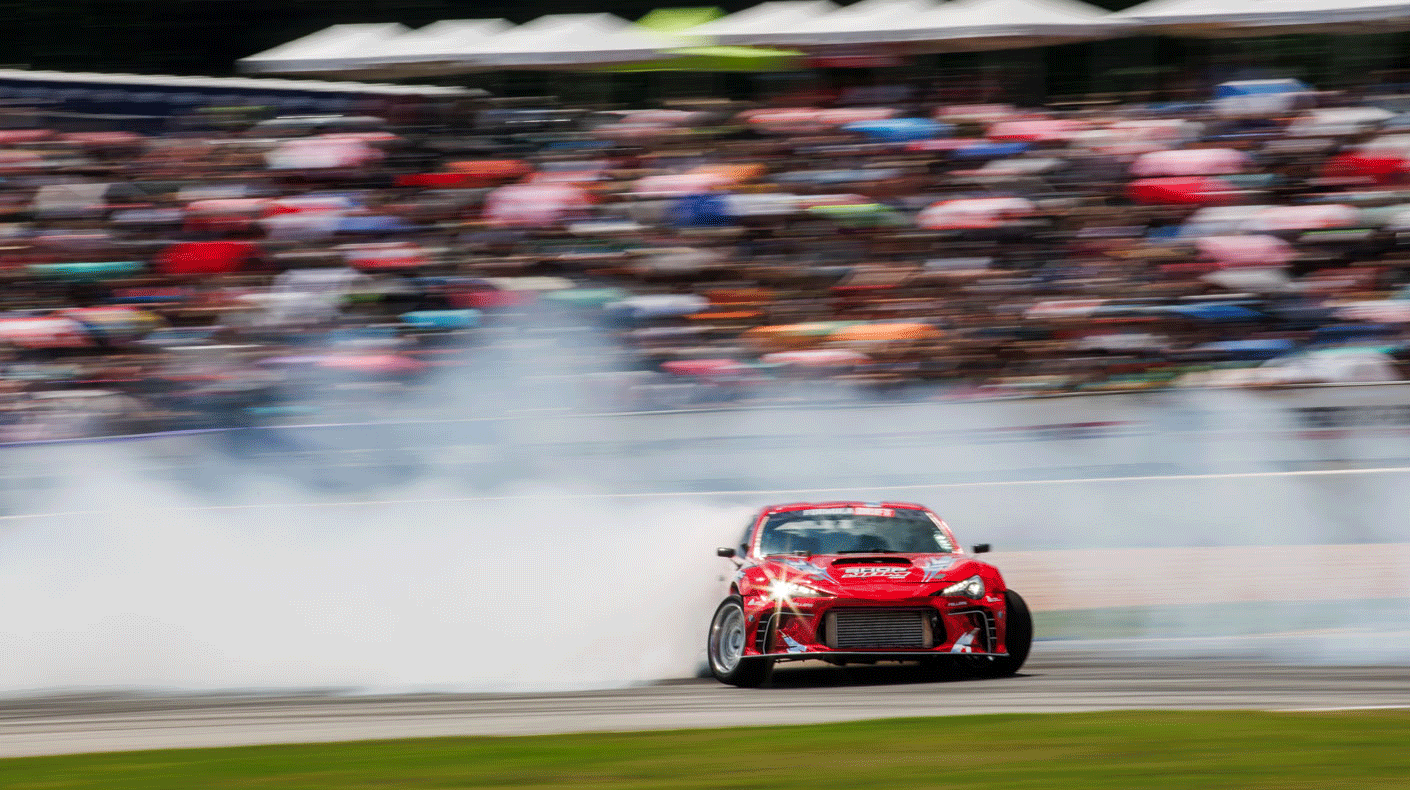
Cramming a comprehensive look at any subculture into a single article is at best a fool's errand. But I'm nothing if not foolish, so slide into your fixed-back buckets and strap into your five points, because we're taking a trip deep into the heart of the tuner culture.
I've lived this life, as both enthusiast and insider, serving some of the most influential content makers in this scene. It's safe to say I know this space, but what I don't know is exactly what to call this perfectly imperfect movement.
Japanese car culture or Japanese Domestic Market (JDM) both feel too exclusive by today's inclusive standards and "sport compact" sounds like a box you'd lazily check on an insurance application. And while it feels like a phrase a PR rep would toss around with reckless abandon, I'm going to refer to this space as the tuner culture.
I'm also going to call in a lifeline by calling upon a panel of tuner iconoclasts to help with this deep dive. These innovators, record-breakers and tastemakers helped create this culture, and each of them brings a unique point of view.
Tuner Culture's Origin Story
Origin stories are not always as neat and tidy as the Marvel Universe would have us believe. Sometimes a tipping point is definitive, like the first-ever phone call or radioactive spider bite. Others are a bit more nebulous, like the early days of hot rodding. Can it be traced to the late '30s when those heady souls blasted across Southern California's dry lake beds in rowdy, fender-free, Flatty-powered Ford roadsters, or later still when things really gained steam on post-WWII decommissioned military runways?
Likewise, the tuner culture's DOB is tough to pinpoint. Many will argue it also originated in SoCal, at clandestine afterhours meet-ups in spots in the late '80s. But what of the Japanese cars central to this movement? Legendary JDM tuners HKS and Mugen both opened their doors way back in 1973 and, while there's no denying this Japanese influence, for purposes of brevity, this piece will focus on the western side of the Pac Rim.
PRI General Manager Jim Liaw has thoughts on this matter. As one of the pioneers in this space, Liaw helped develop one of the first import drag-racing series, before helping bring pro drifting stateside with his Formula Drift series. Today, Liaw is charting the future of motorsports at PRI. According to Liaw, "I think everyone has a different take on the origins of the scene depending on their age and where they lived in the country."
Daryl Sampson echoes Liaw's geo-based sentiment. Decades ago, he worked at Paisley Automotive while helping Craig Paisley campaign his game-changing drag Supra. Today, Sampson serves as vice president of marketing at Turn 14 Distribution, one of the largest warehouse distributors in the space, but his love for import drag racing still rings true.
"There were a lot of pioneers back in the day, but when most of us started, it was at the local street races before there was a name, category and dedicated products to cater to the cars we were building and driving," Sampson recalls. "You had Jeremy Lookofsky, Lisa Kubo, Stephen Papadakis, the late Shaun Carlson, Abel Ibarra and Myles Bautista on the West Coast. And Chris Rado, Craig [Paisley], Vinny Ten, Norris Prayoonto, Eddie Bello, Gary Gardella, and Rafael Estevez on the East Coast. Racers also came from Puerto Rico and the Caribbean to the tracks in the East and were the benchmark for small-displacement engines that made big power. These racers popularized the segment that fed the passion, and the magazines at the time helped spread the word."
Speaking of magazines, Edward Loh was in the trenches during print's glory days, starting with Import Racer! magazine in the spring of 2000. These days he helms one of the largest automotive media companies in the world as the head of editorial at MotorTrend. Loh sees the growth of the tuner movement as a clap-back response to traditional hot rodders.
"I think it's pretty clear that the rise in popularity of hot rodding from the post-war '40s through the '70s and '80s created the environment that fostered 'tuner culture' because what is it, if not the hot rodding of Japanese cars?" said Loh.
"I grew up in the '80s and was in high school in the early '90s," Loh continued. "Fox-body Mustangs are having a resurgence right now, which I find sort of humorous because I hated those cars back in the day. I thought they were all sorts of lame and I have no nostalgia for them. Why? Because I was lusting after a '91 Civic."
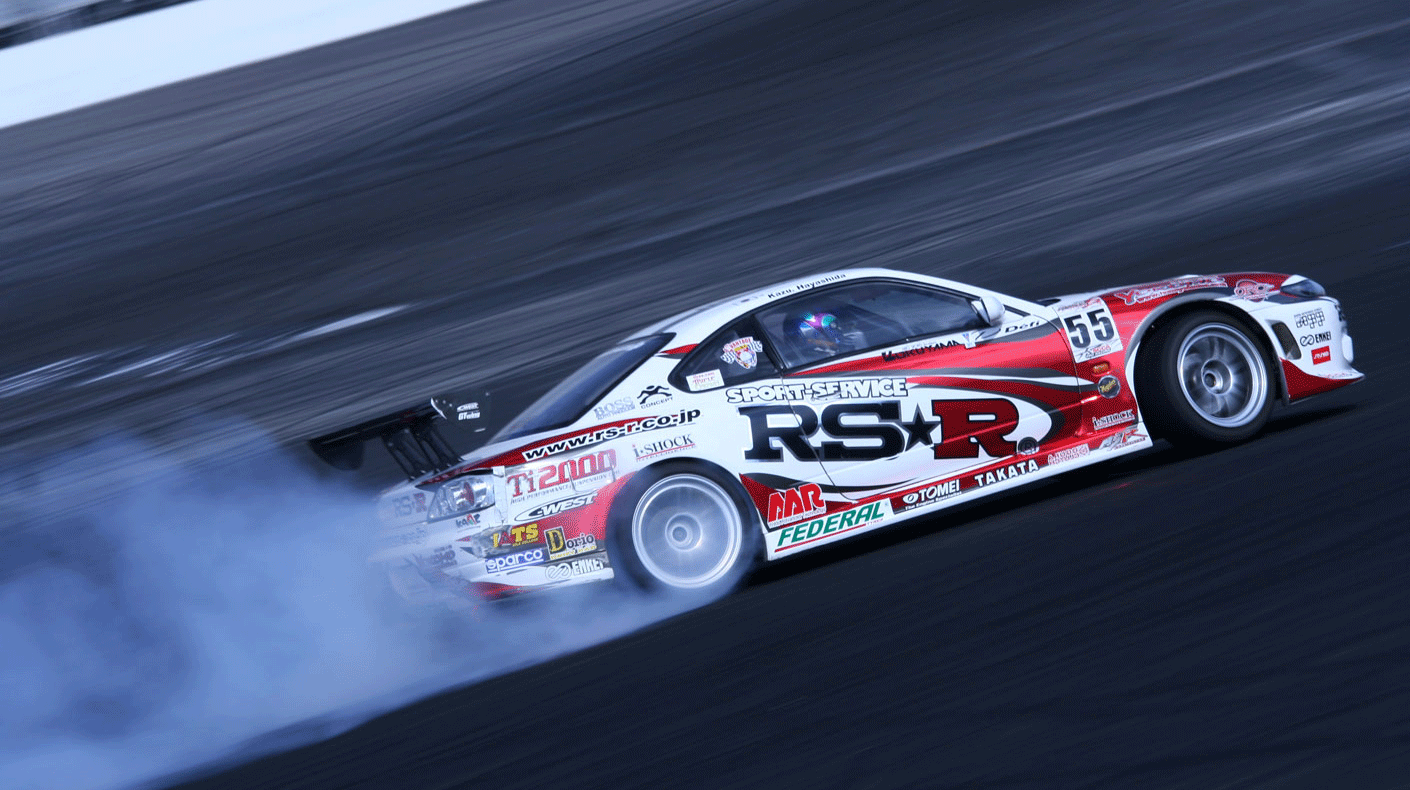
Originally an underground phenomenon in Japan, drifting has enjoyed a remarkable 20-year run in the United States that has seen continued popularity among import and domestic enthusiasts alike.
Loh is also quick to point a celebratory finger at Tod Kaneko, a man many regard as one of the founding fathers of the tuner nation. Kaneko worked on IndyCar, Sprint Car and Nissan race teams, spent a considerable amount of time building boost as an engineer at Garrett Turbo, and is now the R&D program manager at Mazda North America. For Kaneko, the origins of the tuner segment started while he was in high school in the '70s.
"At that time, I was exposed primarily to domestic musclecars," he says. "However, the guys at Hunt Magnetos were also into building small-displacement, high-power four-cylinder race engines. This influenced me a lot. Especially seeing how these small engines could produce as much power as their bigger-displacement V8 counterparts."
"The big Japanese import street-tuning scene for me seemed to ignite in the mid-'70s, and by the '80s things grew exponentially with the arrival of JDM influences here in America. Companies like HKS, TRD, GReddy, A'PEXi, Blitz, etc. all opened branches in California."
Now that we know with a relative degree of certainty what ignited the American tuner culture, let's see what was driving it. Or, to put it another way, what were the makes and models enthusiasts drove at the start of this movement?
Hondas… As Far as the Eye Can See
The obvious answer is the Civic and Integra models of the early '90s. This was when the tuner culture was enjoying a period of explosive growth. Kaneko adds, "Since my friends were mostly of Japanese and of Asian-American descent, there was a natural adoption toward Japanese cars and the cultural ties that came along with it."
But in the late '70s and early '80s the streets and meets were dominated by 510s, Z cars, Celicas and Corollas, R100s, RX-3s, RX-7s--and even Pintos, among others--as the alternatives to the musclecars of the day.
The early '90s ushered in an almighty era of Japanese sports cars, like the third-generation Mazda RX-7, Nissan 300ZX and even the Acura NSX supercar. But the most iconic model to come from this crop of upmarket imports was the fourth-generation Toyota Supra, which rose to pop-diva status with its star turn in the Fast and the Furious.
"Sure, the hero cars were cool, but I didn't have an NSX poster in my room, I had pictures of modded EG Civics and Mk2 GTIs," said Vin Anatra. A content creator who knows a thing or two about popularity and influence, he has been a large part of why the Hoonigan social-media platforms now boast tens of millions of followers.
Even Anatra, as an erstwhile VW kid growing up in Long Island, New York, knew the power of the Civic, but why were these seemingly unremarkable cars so popular? A low-power FWD economy car is not first to mind when trying to build a performance alternative to a traditional hot rod or musclecar. It's inherently wrong. Just ask physics.
And since we're asking questions, ask any Honda enthusiast why these cars are so popular and they'll tell you it's because of the plethora of aftermarket parts choices. Manufacturers will tell you the same--they make the parts because the cars are so popular. See the VTEC-shaped egg and chicken paradox?
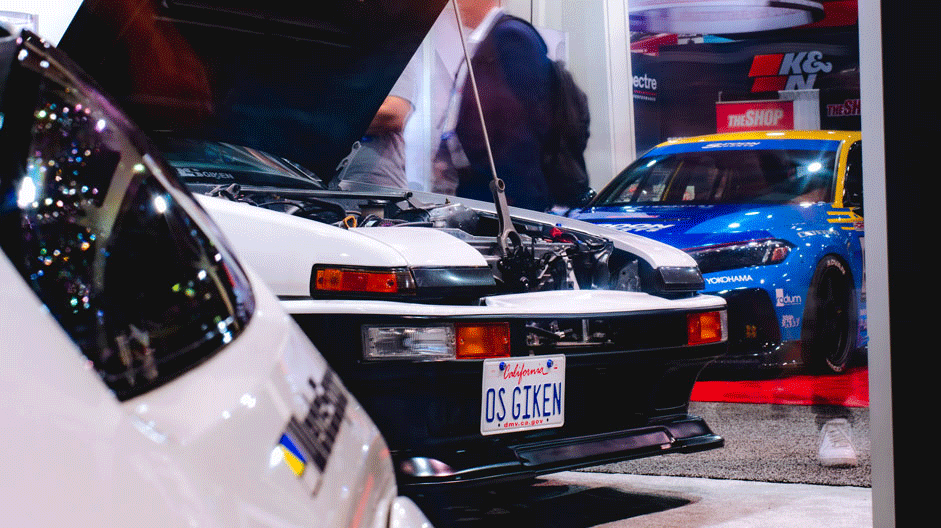
I have a working theory. In the mid- to late-'80s, high school parking lots were littered with third-gen Camaros and Mustangs (I know, I was there). They were the (ahem, loosely defined) musclecars of those days, and many parents were reluctant to reward their newly licensed children with one of these mischief-makers. The solution: an inexpensive, reliable, fuel-efficient economy car--in short, a Honda. As kids do, they found a way to make performance lemonade from these FWD lemons. From there, the early days of the tuner aftermarket industry began to take shape.
JDM: The Forbidden Fruit
In the purest automotive sense, Japanese Domestic Market, or JDM, refers to OEM models sold specifically in Japan. Some, like the Civic and Nissan 240SX were sold in Japan as well as the United States, with such differences as model trims, engines, driver position (right-hand drive versus left-hand drive), exterior lighting and much more.
Initially, Japanese tuning products weren't considered JDM, but today, the term has been assimilated to include both OEM models and aftermarket parts. While some tuning manufacturers made it easy for U.S. enthusiasts to get Japanese-made parts, the desire to stand out from the crowd drove some discriminating tuner kids to seek out even rarer parts.
In what was a right of passage for any early-era JDM purist, Ben Schaffer scoured the Japanese markets near his home in Arizona in search of Japanese Hot Version and Option videos and Option magazines to learn more about this forbidden fruit. "That really got me into Japanese cars, because this didn't exist in U.S. magazines," Schaffer recalls. "It was a different world of tuning that wasn't represented in the United States. I went down a rabbit hole learning about that, but it was hard to acquire information because at that time you couldn't just pull out your phone and look it up. You had to physically hunt things."
As Schaffer's obsession grew, he spent a summer studying in Japan and immersed himself in Japanese car culture, from meets at the iconic Daikoku Parking Area to high-speed blasts on the Wangan Expressway. When he returned inspired, Schaffer launched Bulletproof Automotive from his college dorm room, selling whatever he could import and resell. That was 24 years ago. Today, Bulletproof is one of the largest importers of authentic JDM tuning products.
For Ryan "Rywire" Basseri, JDM represents a way to set yourself apart. "Sourcing hard to get, different from the rest parts are a massive piece of our culture," according to Basseri. He should know. Basseri revolutionized the wiring harness game with his Rywire Motorsports Electronics brand and cut down the barrier to entry that came with JDM Honda engine swaps. "JDM is the quest to change things from original; new ideas, problem-solving, different styles and the hunt for the rarest part."
Today's connected world may take some of the shine from these once-hard-to-get parts, but it's no matter to those immersed in this quirky sub-genre. "JDM represents a culture and a way of thinking and in many respects that exists in any kind of subculture that builds an identity," says Schaffer.
Fluency goes a long way toward gaining entry into this walled garden, as does knowing obscure engine and chassis codes and the difference between a JDM and USDM headlight of a particular model. Today, a keyword or image search can give you the answers you seek, but in those disconnected days, it was a different story.
Controlling the Narrative
Back in the day, magazines were the driving force of information and influence. It started with the very first Turbo and High-Tech Performance magazine in July of 1985. Others, like Sport Compact Car, Super Street and Import Tuner followed.
Stephen Papadakis believes print magazines were the ancestral link to the social-media influencers of today. "There have always been influencers; they were just profiled in magazines," he notes. "The magazines were the gateway for exposure. In some ways that was easier. If you had a cool car, an editor would meet with you for an interview and shoot some pics of your car, then they would handle the rest."
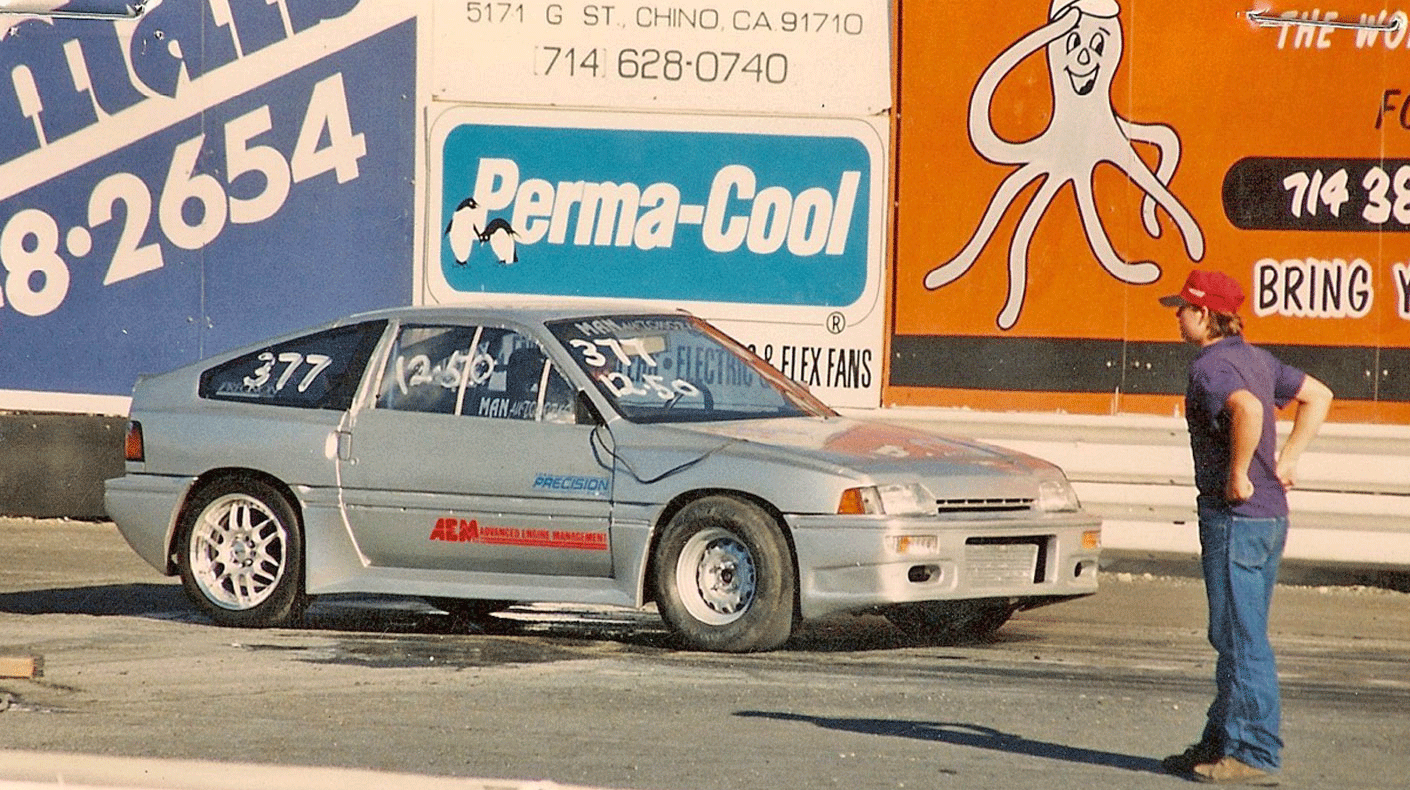
During the import explosion of the '90s, a select few die-hards such as Myles Bautista, defied engine displacement and front-wheel-drive performance in pursuit of single-digit quarter-miles.
Papadakis knows something about influence. He, along with the late Shaun Carlson, built the first tube-frame Civic drag car, which he used to clock the world's first 9-sec. FWD quarter-mile pass. Papadakis has since aimed his Papadakis Racing arsenal at the professional drift space, where he has proven to be just as formidable with an unmatched record of four championships.
The Gatherings
Papadakis's move from drag racing to drifting parallels the communal shift in this culture. It's an ugly truth, but this movement was born on the streets--literally. Illegal street-race meets were the earliest events in this space. That was until Frank Choi gave Honda drag racers a legitimate place to race at his Battle of the Imports drag races. Ken Miyoshi followed soon after with his Import Showoff car shows and in 1998, Hot Import Nights turned out the lights and turned the tables on the traditional car show vibe with an after-dark experience featuring live musical acts.
Around the time Hot Import Nights was redefining the car-show scene, Formula Drift ushered in professional drifting in 2004. Today, these Formula Drift events attract more spectators than any other experience in the tuner culture. Another shift came in 2013 when motorsports intersected with a music festival experience with the first GridLife festival that included drifting, time attack, touring car racing and a festival lineup of musical acts contained within one venue. And while some events were growing in terms of both scope and scale, the tuner culture has also experienced a hyper-localized, hyper-specialized transformation of sorts. Call it the Cars-and-Coffee effect, but casual meets and genre-specific shows have become the low-key gatherings of choice.
"Just look at events like the Japanese Classic Car Show, RADwood and Luftgekuhlt," offered Liaw. "All have brought new enthusiasts to genres and categories that were not on their radar prior to them."
"The more local events there are, the better," according to Schaffer. "It doesn't have to be something that's famous or something that even goes online. Just a gathering of car culture is what makes car culture car culture. If you don't gather, there is no car culture."
Anatra shares this feeling. "For me, cars are all about the people and community. A large majority of my friends I know through cars. You can move anywhere in the world, pull up to a car show, meet or track event and make friends. I don't think they will ever be replaced, no matter how much digital connectivity or community we have to fall back on."
Movie Rights and Wrongs
One blockbuster in particular overshadowed all the print media and experiential events so much so that it forever changed the trajectory of the tuner culture. You already know what it is: the Fast and the Furious film franchise. And as with any mainstream adaptation of a culture, there have been highs and lows.
Schaffer says that anything that brings awareness as an entry point to joining a community is great. "I think Fast and Furious brought awareness to a lot of people to a community that they might not have known. I think that anything that creates an entry point is fantastic."
"This is always a weird one for me," commented Anatra. "Like everyone, I grew up watching the films and to this day can watch the first few and recite nearly every line, but I'll say they didn't shape my love for cars at all!"
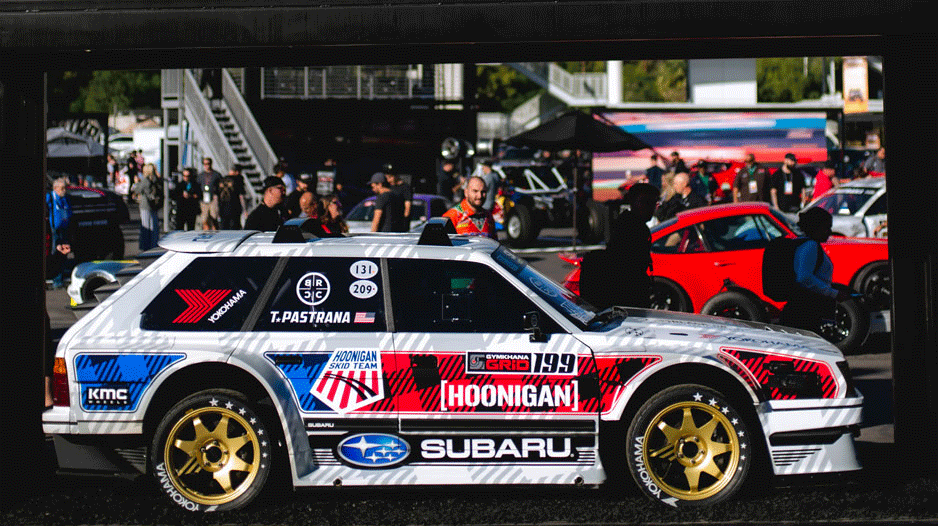
Tuner builds of all types can still be found throughout the SEMA Show year after year.
These days, the films feel more like a Hellcat commercial than anything else, yet the repercussions on the tuner landscape, both positive and negative, remain. While these films may not wield the same sort of leverage they once did, there is one trending faction that has cast a massive influence upon the space.
The Power of Influence
Social media and the rise of the influencer has triggered a paradigm shift in the tuner landscape, creating new avenues of content, products, marketing and, of course, merchandise. Channels like Instagram, TikTok and especially YouTube have democratized media and lowered the surrounding barriers to entry. While this is true across every facet of our lives, the automotive segment, and especially the tuner space, has not only embraced but accelerated this transformation.
Perhaps the biggest trend in this new media order are project builds, where influencers do it all for the 'Gram, so to speak, documenting over-the-top, click-baited flex builds in great detail. YouTube abounds with Hayabusa-powered Power Wheels, exoskeleton Lamborghinis and lifted, rally-spec GT-Rs among other outlandish feats of engineering.
"I hate content cars that are built just for clicks and don't actually work or do anything," adds Anatra. "I have much more respect for guys like [YouTuber] Jimmy Oakes [and a ton more] who build amazing cars to their likings, not just for a title or thumbnail."
Today's Tuners
Even more amazing is the current global automotive tuner market's $6 billion valuation. You can still find Civics and Integras on Honda/Acura showroom floors, the latter having endured a 21-year hiatus and the former Type-R variant having gained 133 hp and some 860 lb.-ft. when compared to the first-gen model.
Are these cars the same? Yes and no. The current models are technological marvels and still very much sporting machines with incredible performance, but all this tech comes with a price and much like their hot-rod brethren, many tuner enthusiasts find that the older tuner cars offer a more rewarding, soul-stirring experience.
Tuner culture forefathers have grown up and, for the most part, settled down, started families and built careers, but the fire still burns within. The only difference is more disposable income. When these early-era tuners want to revisit their high-school cars nowadays they can afford to be more discerning.
This discriminating approach comes at a cost, driving up the prices of golden-era models and parts. Want proof? Consider that pristine, low-mileage fourth-gen Supras and Integra Type Rs can fetch mid-six-figure sales prices at auction.
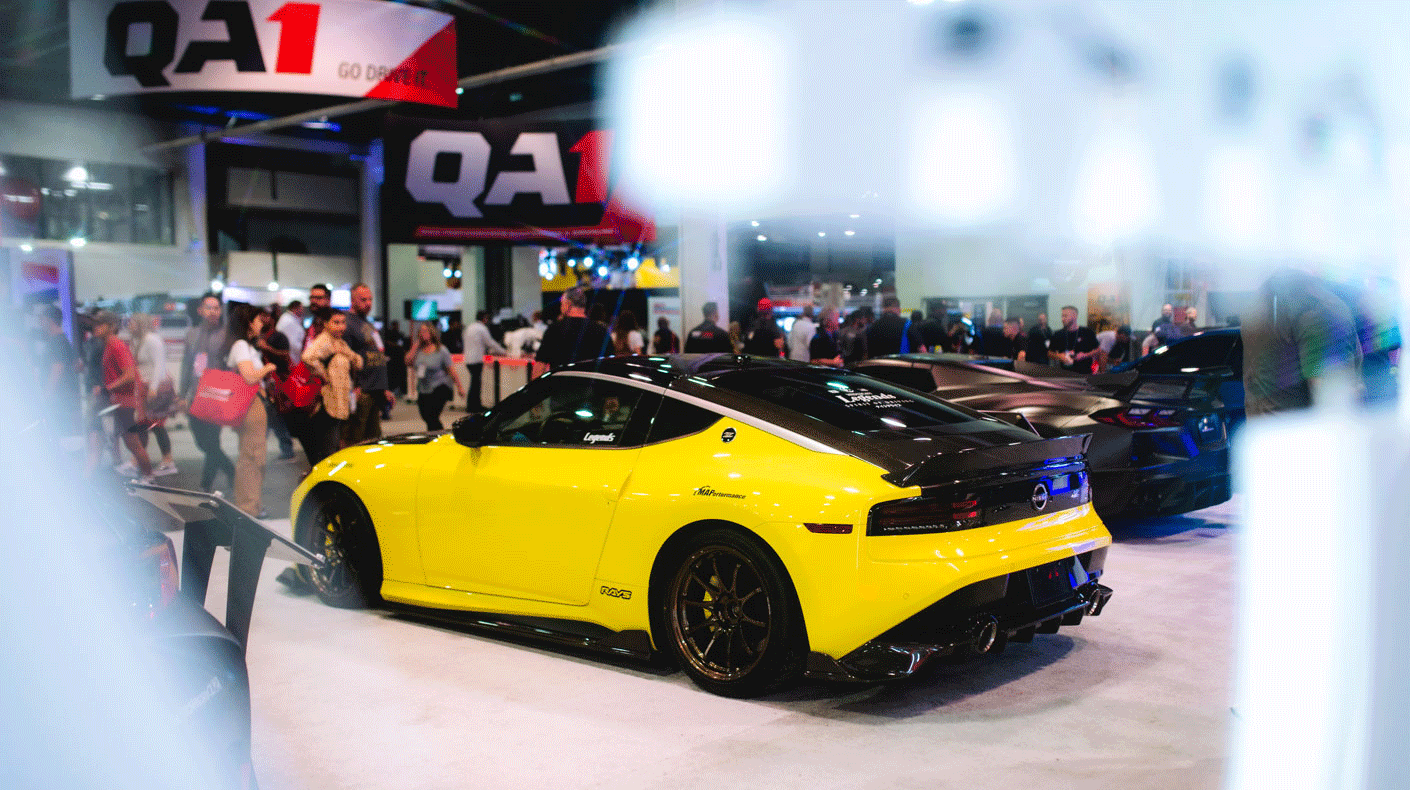
"There's always going to be groups of people who wish for the good old days and want a pure analog experience, and I totally respect that," says Schaffer. "I still have an E30 M3, which is pure analog. To some degree, the older the car, the more engaging and more appealing."
Schaffer's BMW brings an interesting point to mind. Today we see domestic V8-powered drift cars, JDM wheels on Porsches and Corvettes, and even Honda's four-cylinder K-series engine in rat rods. It's all part of an easing of the rigid guidelines that define this segment and the blurring of the lines as to what qualifies as a tuner car.
And don't think the JDM fanatics are left out of this land rush either, thanks to what's commonly known as the 25-year law that specifies that, "A motor vehicle that is at least 25 years old can be lawfully imported into the United States without regard to whether it complies with all applicable federal motor-vehicle safety standards." This has caused a surge of JDM rides to flood our market, most notably Nissan's Skyline GT-R.
Charging Toward Tomorrow
Looking ahead towards the horizon of not only the tuner culture but all of motoring is the inevitable onset of electrification and autonomous vehicles. And not all of us are onboard.
"Personally, I just can't get into the EV performance scene," says Kaneko. "Sure, they exhibit a lot of torque and the performance is good. But for me it's mainly the emotional and sensory feeling of enjoyment that is lacking. I personally need to hear the roar of the engine and smell the fumes."
Basseri believes in the potential impact of electrification having begun to put more effort into making aftermarket EV swap kits for Hondas. "Software-defined vehicles may prove to be the end of the tuner culture, or it may just be the beginning!" he exclaimed.
"The tuning segment is so broad nowadays," said Papadakis. "Whether you have a Toyota GR86 or a Ford Raptor, when you modify it, you are 'tuning' the car. The word tuner or tuner scene is just a modern way of saying hot rod or hot rodding. In another 10 to 20 years the tuners will be the old guys and some new generation will have their own name for the modifications of their vehicles."
It appears that the tuning culture may be all at once the successors of the hot rodders who came before us and the gatekeepers to the next generation of enthusiasts. I, for one, am all about it, while clinging dearly to my gutted '97 Civic hatch, which I will surrender when it's pried from my cold, dead fingers.


